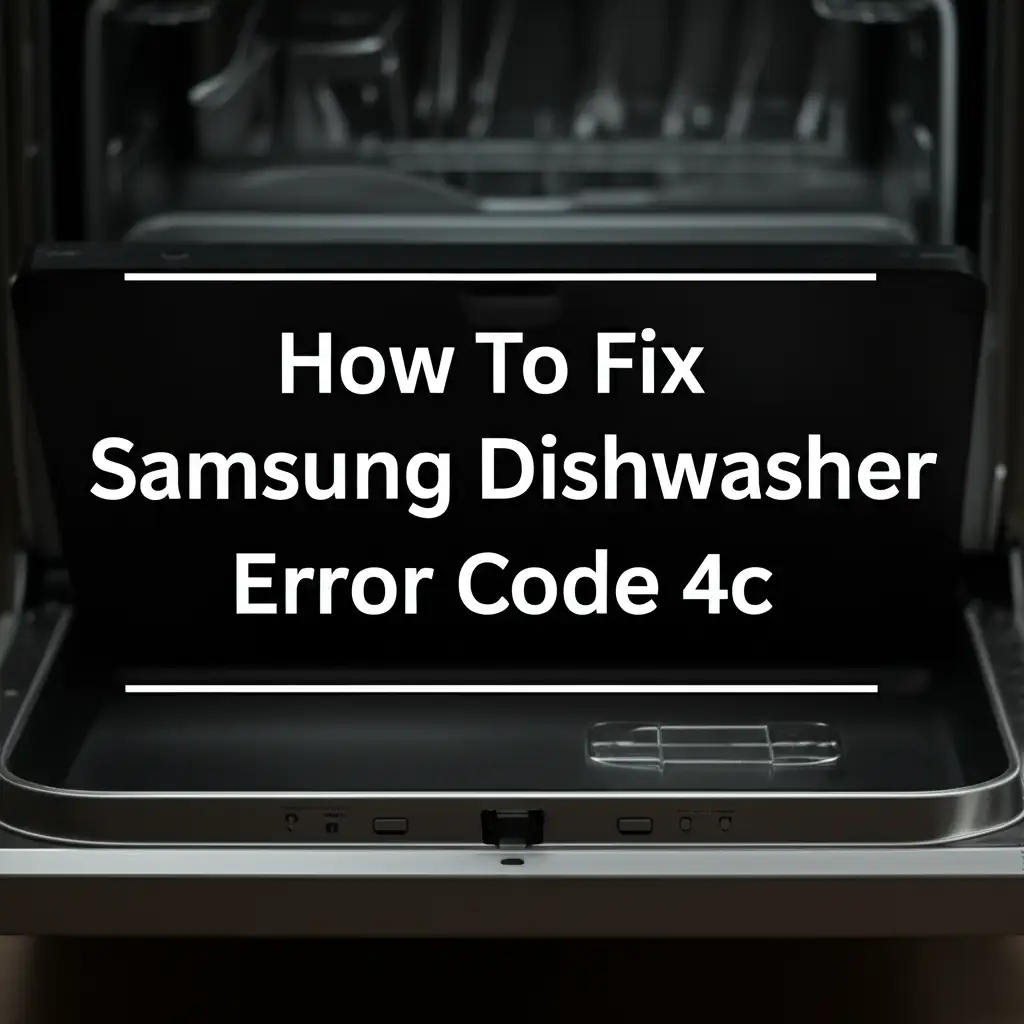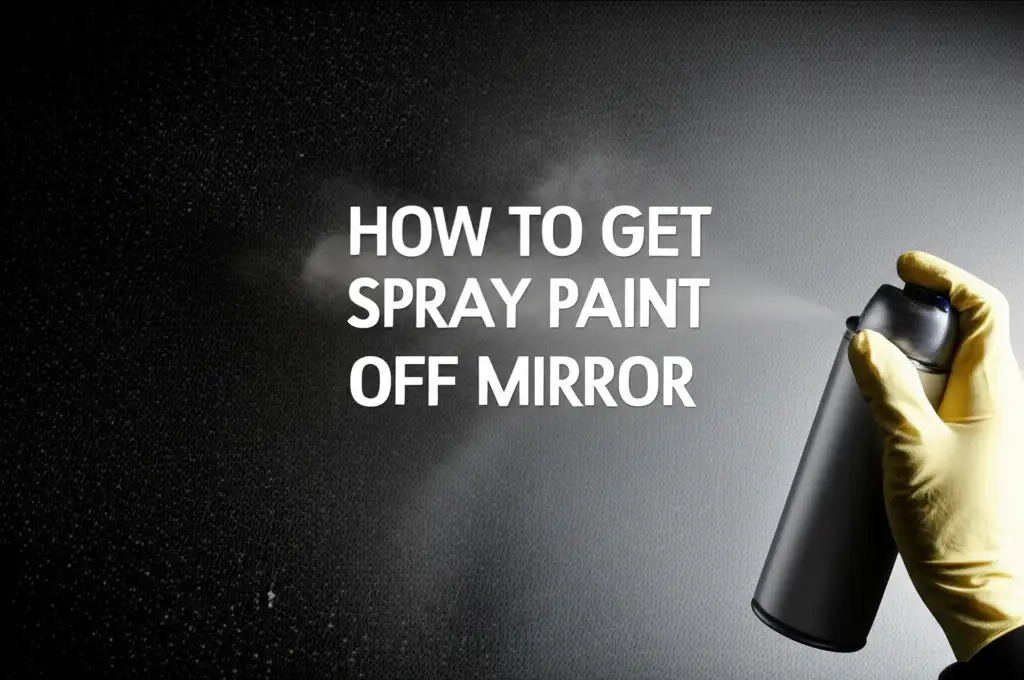· Tessa Winslow · Home Cleaning · 13 min read
How To Fix Samsung Dishwasher Error Code 4c

Fix Samsung Dishwasher Error Code 4c Quickly
Finding an error code on your appliance can stop your daily routine. When your Samsung dishwasher shows error code 4c, it means there is a problem with the water supply. This code indicates either insufficient water entering the machine or the dishwasher detecting a leak. I understand how frustrating it is when dishes pile up because of an appliance issue.
This article will guide you through the process of diagnosing and fixing the Samsung dishwasher error code 4c. We will cover checking water supply lines, inspecting for leaks, examining the water inlet valve, and troubleshooting sensor issues. You will learn simple, actionable steps to get your Samsung dishwasher working again. I will help you tackle this problem effectively.
Takeaway
- Reset your dishwasher: A simple power cycle can clear temporary glitches.
- Check water supply: Ensure the water valve is open and water pressure is adequate.
- Inspect water inlet hose: Look for kinks, clogs, or damage.
- Examine the flood sensor: Ensure it is not triggered by a leak or stuck.
- Look for leaks: Check connections, the tub, and the drain pan for water.
- Test the water inlet valve: Verify it opens and closes properly.
The Samsung dishwasher error code 4c indicates an issue with the water supply or a leak detection. Fixing this usually involves checking the water inlet hose, ensuring the water supply valve is fully open, inspecting for leaks under the dishwasher, and sometimes replacing a faulty water inlet valve or flood sensor.
Understanding Samsung Dishwasher Error Code 4c: Water Supply and Leak Detection
When your Samsung dishwasher displays the 4c error code, it points to a specific issue with its water system. This error code usually signals one of two main problems. First, the dishwasher might not be getting enough water. This could be due to a closed water supply valve or low water pressure. Second, the dishwasher’s flood sensor might detect water in the bottom pan. This indicates a leak somewhere inside the appliance.
The 4c error is a safety mechanism. It prevents the dishwasher from operating without sufficient water, which could damage components. It also stops water from overflowing if a leak occurs. Understanding these two possibilities helps you narrow down the cause. Most times, the problem is straightforward to diagnose and fix yourself. You do not need to call a technician right away.
I have seen many appliances show such codes. They often have simple solutions. The dishwasher’s smart system detects an unusual condition and alerts you. It is designed to protect your home from water damage. We will explore each potential cause in detail. This will help you identify the exact reason your Samsung dishwasher is displaying this code.
Initial Troubleshooting Steps: Simple Fixes
Before you start dismantling your Samsung dishwasher, perform some basic checks. These steps often resolve the 4c error code. Sometimes, the problem is a temporary glitch or a simple oversight. My first recommendation is always to perform a hard reset. This clears the dishwasher’s memory and can fix minor electronic errors.
To reset your Samsung dishwasher, turn off the circuit breaker that powers the unit. Wait for about 5 minutes. Then, turn the circuit breaker back on. This completely cycles the power to the dishwasher. Many times, this simple action resolves various error codes. I have seen this work wonders for many appliances.
Next, ensure the dishwasher door closes completely. A loose door can prevent the wash cycle from starting correctly. Also, check that no dishes or detergent pods are blocking the spray arms. While these are less common causes for a 4c code, they are quick checks to rule out. Ensuring the dishwasher is loaded properly can prevent other issues too, such as affecting how water flows inside.
Checking Your Dishwasher’s Water Supply
Insufficient water supply is a common reason for the 4c error code. I always start by checking the most obvious culprits. First, locate the water supply valve for your dishwasher. This valve is usually under the kitchen sink, near the hot water line. Make sure it is fully open. Sometimes, it gets accidentally bumped or turned off during other tasks.
Once you confirm the valve is open, check the water pressure. You can do this by running the hot water faucet in your kitchen sink. If the water pressure is low there, it indicates a broader plumbing issue in your home. Low pressure can prevent the dishwasher from filling properly, triggering the 4c error. I recommend checking this before assuming a dishwasher problem.
Finally, inspect the water inlet hose. This hose connects the water supply valve to your dishwasher. Look for any kinks, twists, or bends in the hose. A kinked hose restricts water flow significantly. Also, check for any visible damage or leaks along the hose. If the hose is old, it might have internal blockages or wear. Replacing a damaged hose is an easy fix. Ensuring a clear water path is crucial for proper dishwasher operation. You can learn more about general dishwasher drainage issues here: how to get the dishwasher to drain. While 4C is about inflow or leak detection, a severe drain issue could potentially cause backflow or overflowing leading to a leak detection.
Investigating for Water Leaks and the Flood Sensor
The 4c error code often means the dishwasher has detected water where it should not be. This triggers the flood sensor, also known as the leak sensor. This sensor is typically located in the bottom pan of your dishwasher, beneath the wash tub. Its job is to detect any water that leaks from the system. If it senses water, it trips the 4c error to prevent a flood.
To check for a leak, carefully pull the dishwasher out from its cabinet. Lay down towels or old newspapers to catch any spilled water. You will need to remove the lower access panel. This panel is usually at the very bottom front of the dishwasher. Look for any visible signs of water in the pan. Even a small amount of water can trigger the sensor.
If you find water, you need to find the source of the leak. Common leak points include:
- Hose connections: Check the connections for the water inlet hose and drain hose.
- Door seal: Look for cracks or damage around the door gasket.
- Pump or motor seals: These are harder to access, but sometimes leak.
- Tub cracks: Though rare, the main tub itself could have a crack.
After locating and fixing any leaks, you must dry the bottom pan thoroughly. Use a sponge or towels to absorb all water. If the flood sensor remains wet, the 4c error will persist. Ensuring a dry pan is key to clearing the error. A clean dishwasher is a happy dishwasher, and cleaning can help identify issues: how to use dishwasher cleaner. Regular cleaning also prevents component wear that could lead to leaks.
Inspecting the Water Inlet Valve
The water inlet valve is an essential component for water supply. If your Samsung dishwasher is getting water but still shows 4c, or if no water enters at all, this valve might be faulty. The water inlet valve is an electrically operated device. It opens to allow water into the dishwasher and closes to stop the flow. It is typically located at the bottom front of the dishwasher, behind the kick panel.
To check this valve, first, disconnect power to the dishwasher. Then, remove the lower access panel to locate the valve. The water inlet hose connects directly to it. You can visually inspect the valve for any signs of damage or mineral buildup. Hard water can cause calcium deposits to form, blocking the valve. This blockage prevents sufficient water from entering.
You can test the valve’s functionality using a multimeter. Set the multimeter to measure ohms. Disconnect the electrical connectors from the valve. Place the multimeter probes on the valve’s terminals. A healthy valve should show a resistance reading between 500 and 1,500 ohms. If it shows no continuity (open circuit) or a very low resistance (short circuit), the valve is likely bad. Replacing a faulty water inlet valve usually resolves the 4c error. I recommend watching some online tutorials for specific steps on your model.
Addressing Drain Line Issues and Air Gaps (Indirectly Related to 4c)
While the 4c error typically relates to water inflow or leak detection, sometimes drain issues can indirectly contribute. For instance, if the dishwasher cannot drain properly, water can back up into the tub. In some cases, this excessive standing water might trigger the flood sensor in the bottom pan if it overflows from the main tub. Or, a clogged drain could contribute to a leak if the pump is straining excessively.
First, check your dishwasher’s drain hose. Ensure it is not kinked, twisted, or blocked. The drain hose connects the dishwasher to your kitchen sink drain or garbage disposal. Any obstruction here will prevent water from exiting. This can cause water to remain in the tub, potentially leading to other issues. You can often clear minor clogs yourself.
Next, inspect the air gap, if your dishwasher has one. The air gap is a small cylindrical device on your sink counter near the faucet. It prevents drain water from siphoning back into the dishwasher. If the air gap becomes clogged, it can impede proper draining. This might lead to water pooling, which could eventually trigger a leak sensor if the water finds a path outside the tub. I always tell people to keep their dishwasher filter clean to prevent many problems. You can learn about how often to clean your filter here: how often should you clean your dishwasher filter. This preventive maintenance helps ensure your dishwasher runs efficiently and reduces the likelihood of complex issues like those associated with the 4c error.
Examining the Pressure Sensor and Control Board
If you have checked all the mechanical components and still face the 4c error, the problem might lie with an electrical component. The pressure sensor, also known as the water level sensor, measures the amount of water inside the tub. It tells the control board when the dishwasher has enough water. If this sensor is faulty, it might incorrectly report low water levels. This could trigger the 4c error even if the water supply is fine.
To inspect the pressure sensor, you will need to access the bottom of the dishwasher tub. It is usually a small, disc-shaped component with wires connected to it. Look for any visible damage or corrosion on the sensor and its wiring. A multimeter can test the sensor for continuity or proper resistance, but this requires specific knowledge of its expected readings, which vary by model. I usually suggest this step only if you are comfortable with electrical testing.
Finally, the main control board could be the culprit. The control board is the “brain” of your dishwasher. It processes all sensor inputs and controls all functions. If the board is faulty, it might misinterpret sensor readings or fail to send signals correctly. This could lead to a persistent 4c error. Replacing a control board is more complex and expensive than other fixes. I recommend it as a last resort, after ruling out all other possibilities. Look for signs of burning or damage on the board’s surface. If you see any, you may need a professional.
When to Call a Professional for Samsung Dishwasher Repair
You have tried all the troubleshooting steps. You have checked the water supply, inspected for leaks, cleaned the filter, and even tested components. But your Samsung dishwasher still shows the 4c error code. At this point, it is wise to consider calling a professional appliance technician. Some repairs require specialized tools or in-depth electrical knowledge. I always advise caution when dealing with water and electricity.
A certified technician can perform more complex diagnostics. They have specialized equipment to test components thoroughly. They can pinpoint issues that are not obvious to the untrained eye. For example, a hidden leak behind a panel or a nuanced electrical fault in the control board. They can also access proprietary service manuals for your specific Samsung model. This allows for precise troubleshooting.
Also, consider the cost versus benefit. If the repair is expensive, especially for an older dishwasher, buying a new unit might be more economical. A technician can provide an estimate for the repair. You can then compare this to the cost of a new Samsung dishwasher. I always weigh these options carefully. A professional service ensures safety and accuracy in complex repairs. They provide peace of mind.
FAQ Section
Q1: What does error code 4c mean on a Samsung dishwasher? A1: The 4c error code on a Samsung dishwasher indicates a water supply issue or a leak. This means the dishwasher is either not getting enough water to fill, or its internal flood sensor has detected water in the bottom pan. The code serves as a safety warning to prevent damage or water overflow.
Q2: Can I fix the Samsung dishwasher 4c error myself? A2: Yes, many causes of the 4c error can be fixed by yourself. Common solutions include checking the water supply valve, inspecting the inlet hose for kinks, cleaning the filter, and looking for obvious leaks. Simple troubleshooting steps like resetting the dishwasher often resolve the issue.
Q3: Where is the flood sensor located on a Samsung dishwasher? A3: The flood sensor, or leak sensor, on a Samsung dishwasher is typically located in the bottom pan beneath the main wash tub. It is designed to detect any water that leaks into this pan. If water is present, the sensor activates the 4c error code. You need to remove the lower access panel to see it.
Q4: How do I check if my water inlet valve is faulty? A4: You can check your water inlet valve by visually inspecting it for damage or blockages. To test it electrically, first disconnect power to the dishwasher. Use a multimeter to measure the resistance across the valve’s terminals. A reading outside the expected range (e.g., 500-1500 ohms) indicates a faulty valve.
Q5: What if my dishwasher has enough water but still shows 4c? A5: If your dishwasher seems to be filling properly but still displays 4c, the issue likely lies with the flood sensor or the control board. The flood sensor might be stuck, or it might be detecting a very small, unnoticed leak. A faulty pressure sensor or main control board can also cause incorrect readings.
Q6: Does low water pressure cause the 4c error code? A6: Yes, low water pressure can cause the 4c error code. If the water pressure coming into your home or specifically to the dishwasher is too low, the dishwasher might not fill with enough water within the expected timeframe. This triggers the 4c error, indicating insufficient water supply to operate correctly.
Conclusion
Tackling the Samsung dishwasher error code 4c does not have to be a daunting task. We have explored the common reasons behind this frustrating error, from simple water supply issues to more complex leaks and sensor malfunctions. By following the troubleshooting steps outlined, you can diagnose the problem effectively. I am confident you can get your dishwasher back in working order.
Remember to start with the easiest solutions, such as resetting the appliance and checking the water supply valve. Move on to inspecting hoses, looking for leaks, and finally, examining specific components like the water inlet valve or flood sensor. Many times, the fix is straightforward and saves you money on professional repairs. If you find yourself stuck or the problem persists, do not hesitate to seek professional help. Your clean dishes await!
- Samsung Dishwasher
- Error Code 4c
- Dishwasher Repair
- Appliance Troubleshooting
- Home Maintenance
- Water Leak
- Water Supply





